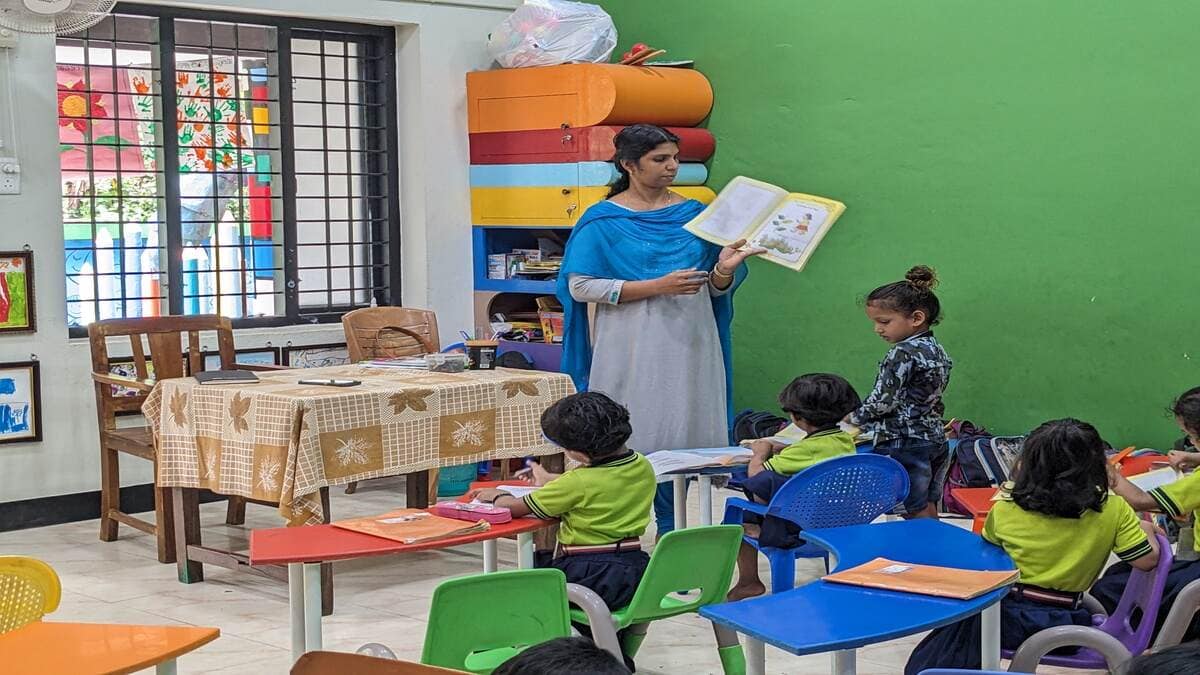As India is set to procure additional batches of S-400, read how the Russian air defence system was a game changer during Operation Sindoor
India is considering to procure further batches of S-400 surface-to-air missile systems from Russia, months after their success during “Operation Sindoor” which destroyed Pakistan’s terror facilities and killed over a hundred terrorists. According to reports, senior defence ministry representatives will soon meet with their Russian counterparts to discuss the possibility of purchasing or jointly manufacturing five additional S-400 air defence systems from Moscow to improve India’s long-range defensive capabilities. It is anticipated that the agreement would be approved before to Russian President Vladimir Putin’s 5th December arrival in India for the yearly summit with Prime Minister Narendra Modi. Two of the five S-400 systems included in the $5.43 billion deal which transpired on 5th October 2018 will be delivered by the end of 2026. Three squadrons of the system have already been delivered, based on other reports. Notably, the contract was inked by the Modi government despite warnings from the United States that the agreement would lead to sanctions under the Countering America’s Adversaries Through Sanctions Act (CAATSA). Now, the two sides are in discussion of obtaining five more systems to guard against any attacks along the nation’s more than 7000 kilometres of coastline and to heal the air defence gap in the northern command area. The cost of the extra five systems which will increase annually from the 2018 pricing has already been agreed upon by the two partners, reported Hindustan Times. The details continue to be worked out but three of the five will be bought outright, with the remaining ones being developed by Indian private sector businesses through a technology transfer process. According to persons familiar with the situation, the settlement will be government-to-government and consist of maintenance, repair and overhaul facilities established in partnership with the Indian private sector. The S-500 system is under development in Russia, they added, hence rumours that India is buying the same are untrue. Chief of Air Staff Air Chief Marshal Amar Preet (AP) Singh stated, “Obviously, that has done good. So, there’s a requirement to have more such (systems), there is no limit to numbers that you can buy. Again, I’m keeping quiet on what the plan (is) whether we want to buy more, how much etc,” maintaining silence about the reports regarding the weapon system. He added, “It has proved to be a good weapon system. We have our own system also being developed. So we will take a call on that.” India is also seeking a Russian-made RVV-BD, a missile with a range of over 200 kilometres to strengthen its Su-30 MKI fleet, since Pakistan is already using a Chinese-built PL 15 air-to-air missile with a range of 200 kilometres which it launched against India in “Operation Sindoor.” It will be necessary to upgrade the Su-30 MKI’s onboard radar to integrate the R-37 missile (RVV-BD). S-400 effectiveness in “Operation Sindoor” Pakistan launched a concerted assault on multiple locations in northern and western India, including Srinagar, Jammu, Amritsar, Bathinda and Chandigarh on 8th and 9th May, in a desperate attempt to exact revenge for the destruction of its terror infrastructure amid “Operation Sindoor.” The attack involved a wave of drones and other ordnance. However, India used its multi-layered air defence system which included the Akashteer ADCRS, S-400 Sudarshan Chakra, Barak 8 MRSAM (Medium Range Surface to Air Missile) and Akash Missile System to ward off the influx of Pakistani drones and missiles. Pakistani missiles and drones were counterattacked by the Indian Air Force using Israeli-made HARPY drones and Russian-made S-400 missile defence systems. The Islamic Republic fired 8 missiles into the Arnia, Satwari, Samba and RS Pura sectors. However, the S-400 was able to intercept and strike them in midair before they could reach their intended destinations. The missiles were aimed towards the Jammu Civil Airport. Two drones from Pakistan were also shot down close to Jammu University. Additionally, the S-400 set a record when it hit an aircraft at a distance of over 300 kilometres. The S-400 long-range missiles destroyed Pakistan F-16 and JF-17 jets up north as well as struck a Pakistan ELINT aircraft 314 kilometres away in its Punjab province. The S-400 system was so feared that Pakistan had to relocate all of its aviation assets more than 300 kilometres from the Indian border with very few planes taking to the skies on 10th May. It was a formidable barrier against the terror state’s airborne assault in addition to being an effective standoff weapon. On 9th August AP Singh provided the details of Pakistan’s losses during Operation Sindoor. He disclosed that the Indian Air Force (IAF) shot down “at least” five Pakistani fighter jets and “one large aircraft” and highlighted that the S-400 missile system had been a “game-changer” during the significan



India is considering to procure further batches of S-400 surface-to-air missile systems from Russia, months after their success during “Operation Sindoor” which destroyed Pakistan’s terror facilities and killed over a hundred terrorists.
According to reports, senior defence ministry representatives will soon meet with their Russian counterparts to discuss the possibility of purchasing or jointly manufacturing five additional S-400 air defence systems from Moscow to improve India’s long-range defensive capabilities.
It is anticipated that the agreement would be approved before to Russian President Vladimir Putin’s 5th December arrival in India for the yearly summit with Prime Minister Narendra Modi. Two of the five S-400 systems included in the $5.43 billion deal which transpired on 5th October 2018 will be delivered by the end of 2026. Three squadrons of the system have already been delivered, based on other reports.
Notably, the contract was inked by the Modi government despite warnings from the United States that the agreement would lead to sanctions under the Countering America’s Adversaries Through Sanctions Act (CAATSA).
Now, the two sides are in discussion of obtaining five more systems to guard against any attacks along the nation’s more than 7000 kilometres of coastline and to heal the air defence gap in the northern command area.
The cost of the extra five systems which will increase annually from the 2018 pricing has already been agreed upon by the two partners, reported Hindustan Times. The details continue to be worked out but three of the five will be bought outright, with the remaining ones being developed by Indian private sector businesses through a technology transfer process.
According to persons familiar with the situation, the settlement will be government-to-government and consist of maintenance, repair and overhaul facilities established in partnership with the Indian private sector. The S-500 system is under development in Russia, they added, hence rumours that India is buying the same are untrue.
Chief of Air Staff Air Chief Marshal Amar Preet (AP) Singh stated, “Obviously, that has done good. So, there’s a requirement to have more such (systems), there is no limit to numbers that you can buy. Again, I’m keeping quiet on what the plan (is) whether we want to buy more, how much etc,” maintaining silence about the reports regarding the weapon system. He added, “It has proved to be a good weapon system. We have our own system also being developed. So we will take a call on that.”
India is also seeking a Russian-made RVV-BD, a missile with a range of over 200 kilometres to strengthen its Su-30 MKI fleet, since Pakistan is already using a Chinese-built PL 15 air-to-air missile with a range of 200 kilometres which it launched against India in “Operation Sindoor.” It will be necessary to upgrade the Su-30 MKI’s onboard radar to integrate the R-37 missile (RVV-BD).
S-400 effectiveness in “Operation Sindoor”
Pakistan launched a concerted assault on multiple locations in northern and western India, including Srinagar, Jammu, Amritsar, Bathinda and Chandigarh on 8th and 9th May, in a desperate attempt to exact revenge for the destruction of its terror infrastructure amid “Operation Sindoor.”
The attack involved a wave of drones and other ordnance. However, India used its multi-layered air defence system which included the Akashteer ADCRS, S-400 Sudarshan Chakra, Barak 8 MRSAM (Medium Range Surface to Air Missile) and Akash Missile System to ward off the influx of Pakistani drones and missiles.
Pakistani missiles and drones were counterattacked by the Indian Air Force using Israeli-made HARPY drones and Russian-made S-400 missile defence systems. The Islamic Republic fired 8 missiles into the Arnia, Satwari, Samba and RS Pura sectors. However, the S-400 was able to intercept and strike them in midair before they could reach their intended destinations.
The missiles were aimed towards the Jammu Civil Airport. Two drones from Pakistan were also shot down close to Jammu University. Additionally, the S-400 set a record when it hit an aircraft at a distance of over 300 kilometres.
The S-400 long-range missiles destroyed Pakistan F-16 and JF-17 jets up north as well as struck a Pakistan ELINT aircraft 314 kilometres away in its Punjab province.
The S-400 system was so feared that Pakistan had to relocate all of its aviation assets more than 300 kilometres from the Indian border with very few planes taking to the skies on 10th May. It was a formidable barrier against the terror state’s airborne assault in addition to being an effective standoff weapon.
On 9th August AP Singh provided the details of Pakistan’s losses during Operation Sindoor. He disclosed that the Indian Air Force (IAF) shot down “at least” five Pakistani fighter jets and “one large aircraft” and highlighted that the S-400 missile system had been a “game-changer” during the significant action.
“The kill range of the S-400 system kept Pakistani aircraft away,” Singh outlined. “Clearly, the S-400 systems have been capitalised fully in the operation,” an Air Force officer asserted, according to a report by The Indian Express.
Russian envoy Denis Alipov had earlier mentioned that the performance of S-400 system and the jointly-manufactured BrahMos missiles was excellent during the conflict between Islamabad and New Delhi.
“From what we know, India has clearly stated the goals and undertook actions after having identified the targets and the terrorists it promised to do. As far as we know, during the operation, the S-400 system was used and the BrahMos missiles were engaged. Judging by the reports available, the performance of these weapons was exemplary,” he observed.
What makes S-400 deadly
Russia created the S-400 Triumf, a mobile surface-to-air missile system (SAM). It was put into service in 2007 and is regarded as the most operationally dangerous modern long-range SAM in the world, surpassing the Terminal High Altitude Area Defence system (THAAD) which was designed in the United States.
Fighter planes engage enemy aircraft during the interception phase of the Indian air defence system, which starts as soon as an aerial threat is detected while surface-to-air missiles, such as the S-400 combat the approaching threats.
The S-400 contributes to India’s improved air defence capabilities and is seen as a grave threat because of its remarkable long-range capabilities. Additionally, it is capable of participating in all forms of contemporary warfare.
This invincible missile defence system is among the most advanced in the industry since it can intercept threats within 400 kilometres and track incoming threats from 600 kilometres afar. S-400 comprises three main components: a strong radar for 360-degree tracking, missiles to intercept and a command centre.
The S-400 is also equipped with launchers, anti-aircraft missile systems, autonomous detection and targeting systems alongside a multifunction radar. It has a five-minute deployment time and can fire three different kinds of missiles to provide a multi-layered defence.
It can engage any kind of airborne target up to 30 kilometres in altitude, including aircraft, unmanned aerial vehicles, ballistic and cruise missiles within a 400-kilometer range. The S-400 is also capable of tracking 100 aerial targets at once, including super aircraft like the US-built F-35 and confronting six of them simultaneously. The S-400 missile defence system can engage any modern aircraft.
India fortifies its defence sector
India’s defence industry has changed dramatically since 2014, moving from a military force that relied heavily on imports to one that is becoming more self-sufficient and producing its own equipment which is essential to maintaining regional stability and achieving strategic objectives.
The nation’s defence budget which was ₹2,53,346 crore in 2013-14 has increased significantly to ₹6,21,940.85 crore in 2024-25, demonstrating a strong commitment to enhancing its defence capabilities. India continues to buy sophisticated weapons while putting a focus on domestic production through the Defence Acquisition Procedure (DAP) 2020 and the “Make in India” initiative.
This two-pronged strategy strengthens national security by arming its military with advanced weapons missile while encouraging domestic defence production and exports to lessen reliance on imports. The expansion of India’s defence manufacturing sector which has grown to be a vital component of the economy, lies at the heart of this change.
The government has actively encouraged domestic production and decreased dependency on foreign procurement through the “Make in India” campaign and regulatory changes. The shift has been a crucial part of India’s larger plan to achieve Atmanirbharta (self-reliance) in defence, promoting the country as a developing centre for the manufacture of cutting-edge military hardware and technologies.
India’s defence production reached a new high of ₹1.27 lakh crores in the fiscal year 2024, jumping 174% from ₹46,429 crore in FY2015. “Operation Sindoor” has resulted in a surge in demand for the nation’s domestic systems around the world. Additionally, this pace coincides with a global growth in military spending to over $2.7 trillion in FY 2024.
Major acquisitions and clearances over the past year also boosted India’s defence readiness and showcased the government’s dedication to modernisation and self-reliance including the Advanced Medium Combat Aircraft (AMCA), Flight Refuelling Aircraft (FRA), Light Combat Helicopters (LCH) Prachand, MQ-9B Drones, BrahMos Missile Systems and Advanced Towed Artillery Gun System (ATAGS).
Likewise, exports of domestic defence items have surged substantially, climbing 34 times in just 11 years from ₹686 crore in FY2014 to ₹23,622 crore in FY2025. Moreover, the growth of regional supply chains, the expansion of joint ventures (JVs) and the facilitation of seamless transfer-of-technology (ToT) agreements are taking place simultaneously.
New Delhi is currently enhancing its indigenous domestic capabilities while also collaborating with foreign manufacturers to strengthen the country’s defence in response to a challenging situation. India’s impressive defense capabilities were illustrated during “Operation Sindoor” and in the aftermath, action in the defence sector has only accelerated at a rapid pace.
The upcoming S-400 agreement represents yet another critical step in the same direction.



























































































































